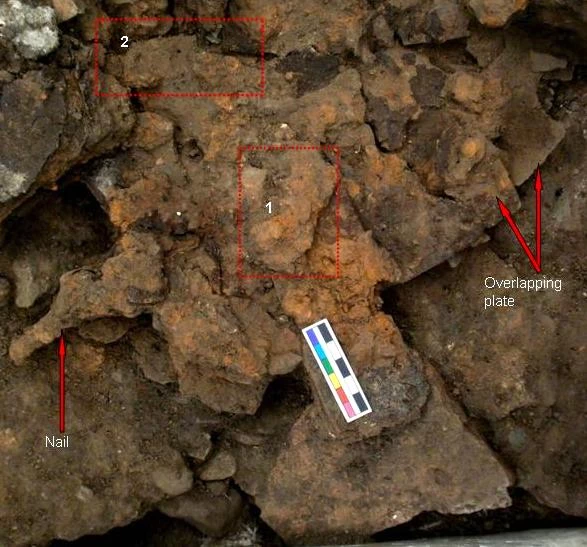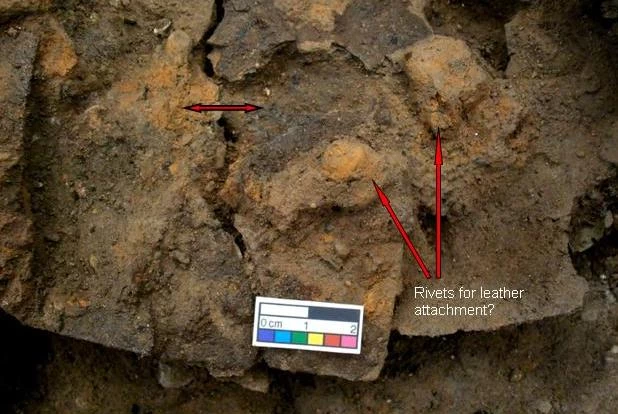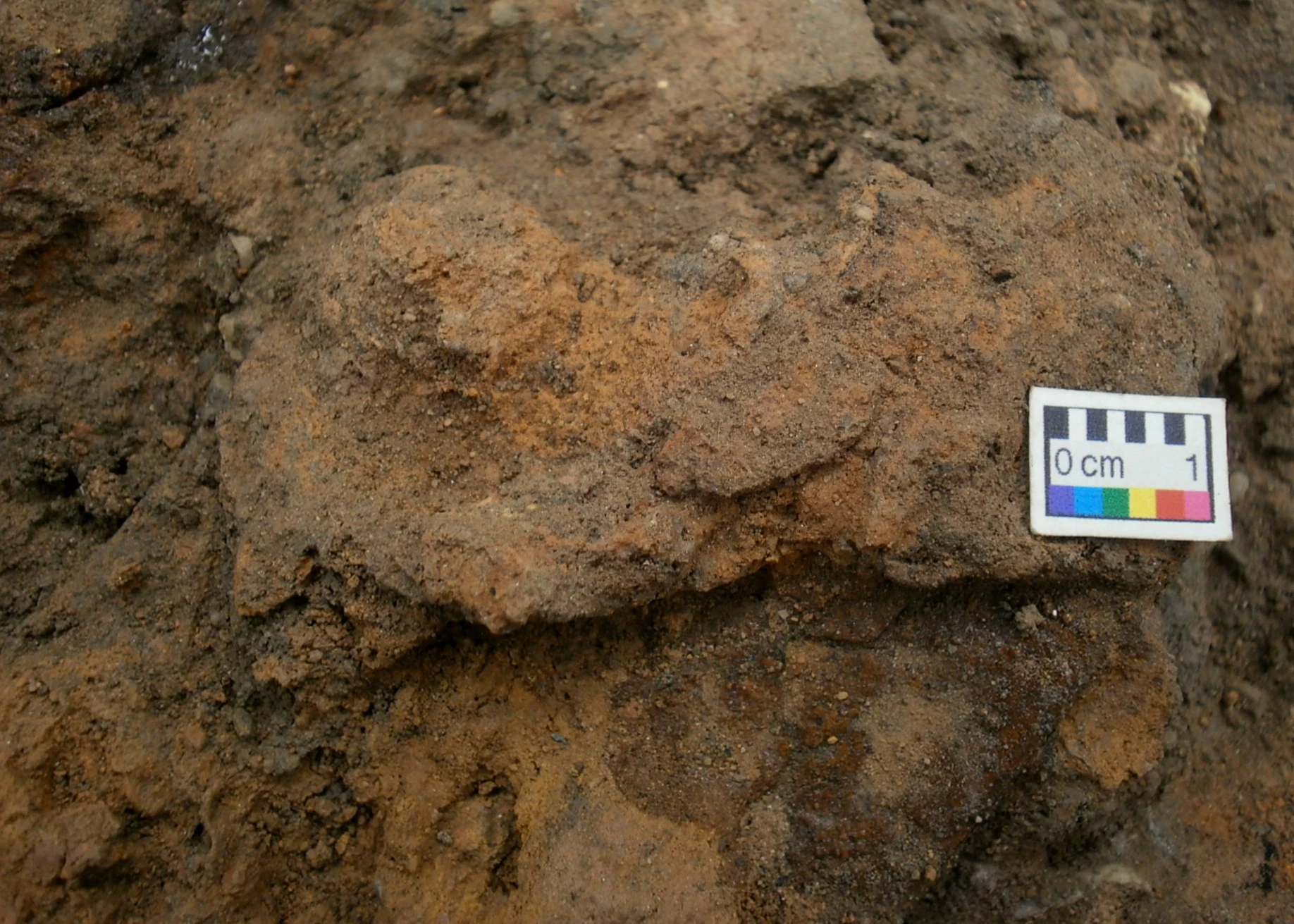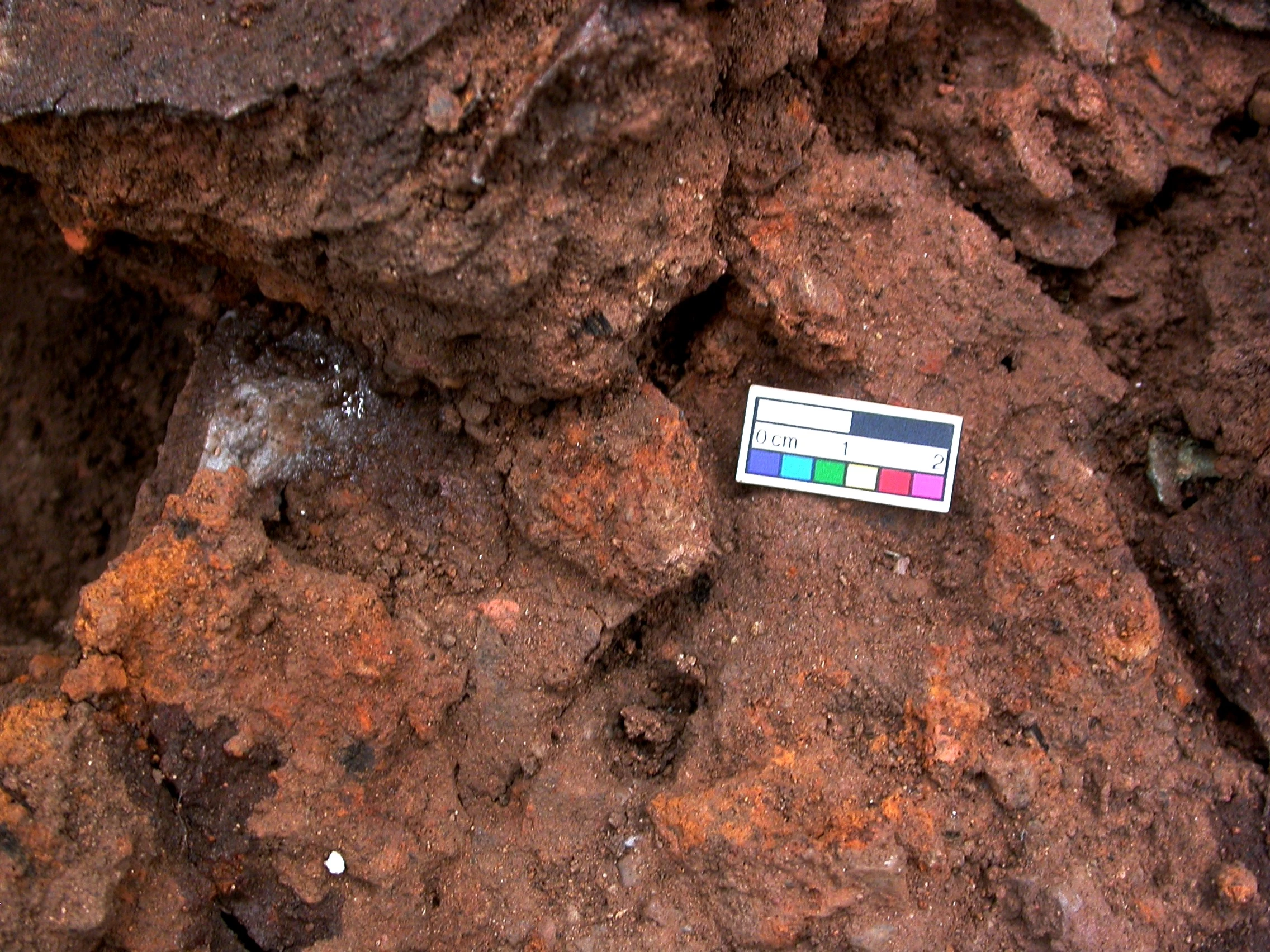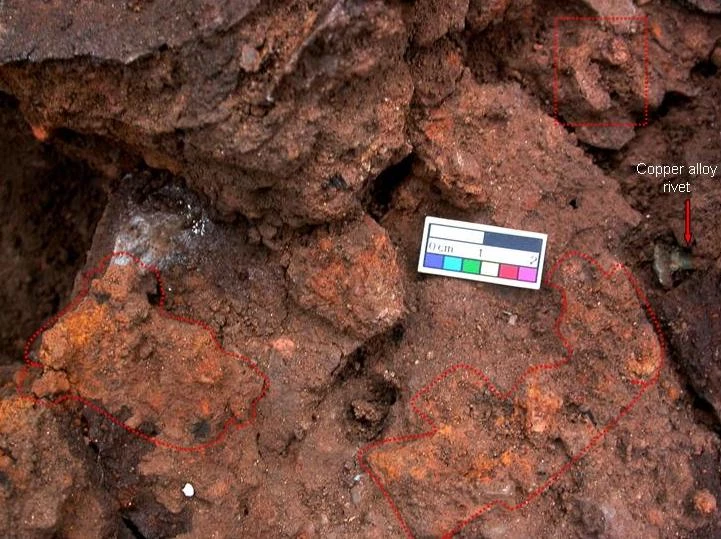Continued Excavation of Roman Armour: Problems with Corrosion
21 October 2011
This blog entry discusses the third section of the large soil block to be excavated: for ease of identification and documentation I have called this area ‘Feature 3’. This label will be important in the future, after I have deconstructed the block and need to be able to keep track of the position of groups of artefacts within this large assemblage. This instalment discusses a relatively small area of the block, with the main focus resting not so much on the lorica plates present, but on the corroded remains of fittings attached to them.
As here we are chiefly looking at vague shapes, I felt that it was important for this entry to include both annotated and un-annotated versions of photographs, so readers can come to conclusions without my interference. The first photograph is an image of this third part overall, and the second photograph includes arrows and boxes indicating particular areas of interest examined in this entry. The third photograph has been included to give the reader an idea of the depth of the archaeological artefacts, the thickness of the iron plate, and an impression of the poor condition of the remains.
In order to introduce the ‘fittings’, a short note on the corrosion processes that have taken place in these blocks is most definitely necessary. The more I excavate and study this block the more I realise that the different components of the lorica segmentata have corroded in dissimilar ways. The exposed plate has a firm, dark magnetite surface, on top of which are localised areas of powdery, orange corrosion. I believe this second, more disruptive type of corrosion product (an iron oxide), are the remains of iron rivets and fittings.
I think there are two reasons for the fittings to have corroded in a different way to the iron plate: firstly, as a result of being in contact with the leather strap which would have run vertically the length of the inside of the cuirass- the release of acetic acid by the leather could have jumpstarted corrosion. Secondly, the fittings could have corroded more quickly than iron plate, given the greater amount of working and energy required to create there more complicated shapes. The fourth photograph I think illustrates my theory quite clearly: here we are looking at rivets, belonging to two overlapping plates (which could well be in this position because they were neighbouring plates on the cuirass when in use, and at the time of deposition), that have corroded more drastically than the plate. I believe, given their shape and positioning these were rivets and washers holding the leather straps, and we are looking at the interior side of the plate.
Working on the above theory, the fifth photograph shows a detail photograph of the area enclosed within the dashed red box and marked with a ‘1’ on the main annotated overview. I believe this lumpy feature, clearly different in colour and texture to the plate underneath, is again the remains of rivets and washers holding the internal leather straps in place. You can see here how an iron component can corrode in such a way as to increase in physical size: the resulting ‘object’ is larger than the item really was in antiquity.
The sixth and seventh photographs show another area of plate with corroded fittings (and in the corner, a copper alloy rivet).Here we can see a rectangular feature (outlined in the seventh photograph), which I believe is essentially iron corrosion, holding the shape of a now non-existent leather strap.
An x-ray will hopefully provide more information about these ephemeral features, though detecting areas of corroded and degraded material (which will have a low density) on a background of denser archaeological artefacts and burial deposit, could be difficult.

